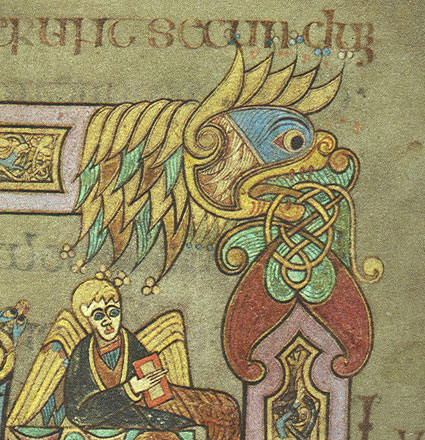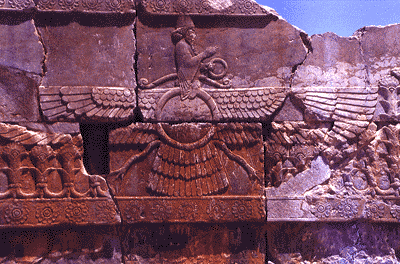 http://www.romanes.com/Paris/Notre_Dame_de_Paris/Notre_Dame_de_Paris_0003_en.html
http://www.romanes.com/Paris/Notre_Dame_de_Paris/Notre_Dame_de_Paris_0003_en.htmlHere is a photo of Notre Dame. The flying buttress are very apparent in this photo. The flying buttresses were designed to balance the weight of the nave, and which the nave was created higher in the cathedral.I think the flying buttress gives emphasis to the center and an open, kind of airy feel to the cathedral. For this research I looked at photos of Notre Dame, which were all from the history link above and I watched a video on youtube. Here is the video link: http://www.youtube.com/watch?v=DFQDuQUY-XM I found out Notre Dame's construction had begun 1163 and finished 182 years later. Also the high alter was created during the time. There are a lot of statues included on this Gothic cathedral. The final judgment is within the designs. There are also a lot of stain glass windows. I am glad Victor Hugo wrote about the cathedral as mentioned at the end of this video. The book made people interested in the building again and wanted to redeem it. Though, I have heard from friends that Hugo goes into long passages of describing Notre Dame and should have just made a book for Notre Dame.
 I think I would like to see Notre Dame on my Dream trip to France.
I think I would like to see Notre Dame on my Dream trip to France.
 There seems to be patterns withing the shapes that form the creatures head. The blue from the angels eyes help compromise with the creatures blue head. So many repeated lines. Lines within lines.
There seems to be patterns withing the shapes that form the creatures head. The blue from the angels eyes help compromise with the creatures blue head. So many repeated lines. Lines within lines. This one really appealed to me. The bright yellow and rustic colors give off a nice warm theme, though the hidden blue helps balance the warm colors. The square shapes and ornate design remind me of Persian carpets.
This one really appealed to me. The bright yellow and rustic colors give off a nice warm theme, though the hidden blue helps balance the warm colors. The square shapes and ornate design remind me of Persian carpets.






 http://mmtaylor.net/Holiday2000/Crete/Crete_pix/phaestos.disk.jpg
http://mmtaylor.net/Holiday2000/Crete/Crete_pix/phaestos.disk.jpg



 Here is part of a sleeve. It looks like a pillow. A lot of use of warm colors and complementary colors as well like the orange and blue leaves. I almost did not see the green leaves, because they blend well with the golden background if it was not for the orange growth on the tips of the green leaves drawing my attention to them I would have missed them entirely.
Here is part of a sleeve. It looks like a pillow. A lot of use of warm colors and complementary colors as well like the orange and blue leaves. I almost did not see the green leaves, because they blend well with the golden background if it was not for the orange growth on the tips of the green leaves drawing my attention to them I would have missed them entirely. 




 Here is a part of the Rani Ki Vav. There is so much movement and patterns crammed into these reliefs.
Here is a part of the Rani Ki Vav. There is so much movement and patterns crammed into these reliefs.







